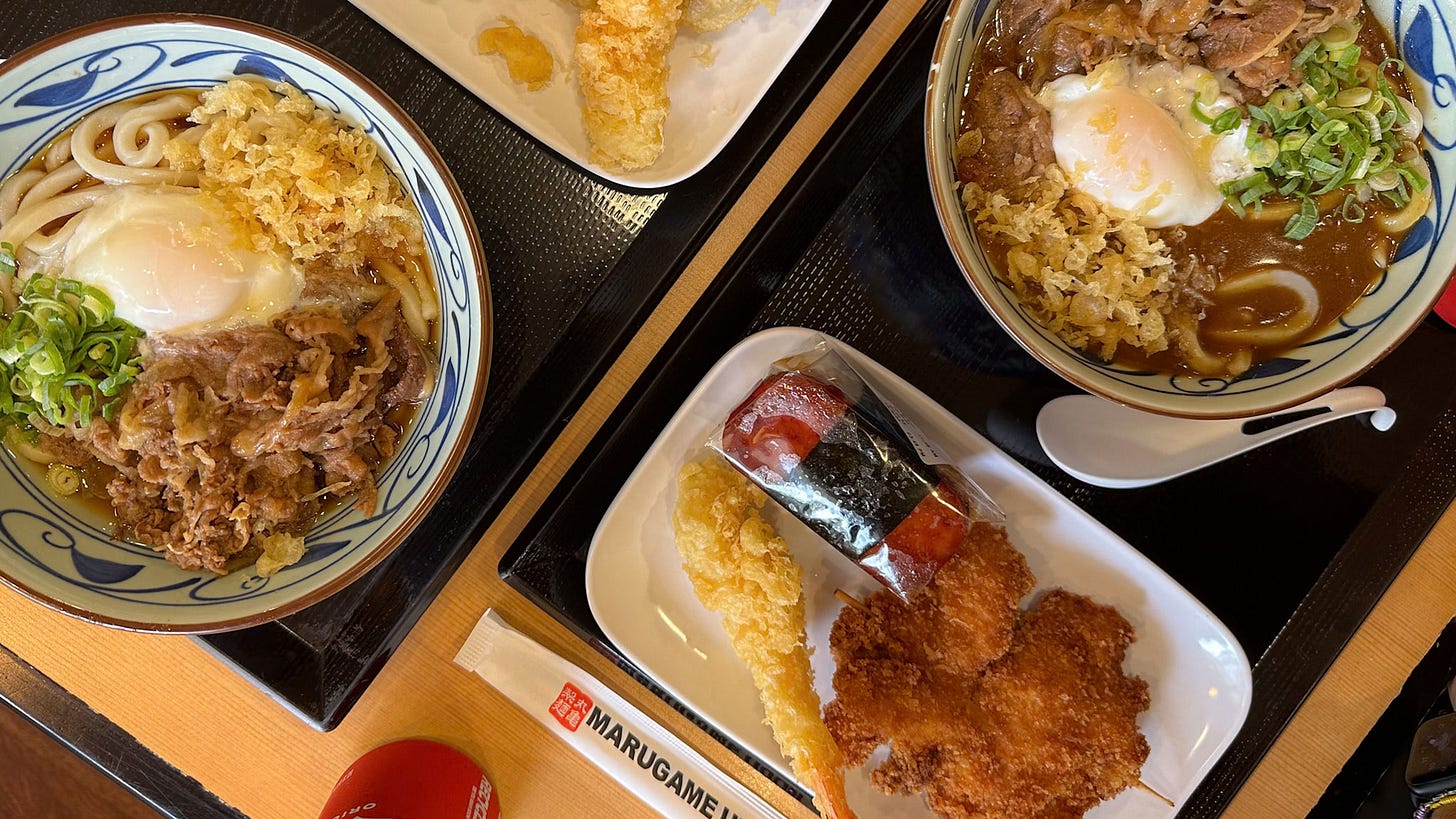I had a nice run on the treadmill yesterday. Yes, hamster wheel haters, it is possible. Feeling the twinges of a muscle strain later in the night, I realized I’d overdone it. The likely culprit? Ten speedy strides at the end of an otherwise easy jog.
The strides themselves weren’t unusual. Three or four times a week, I’ll do a few short bursts to 5k pace (6:00). Last night, I did 10 longer efforts, with the final two at mile pace (5:30). Ya boy was feelin’ himself. Now, ya boy has regrets.
I would have done well in that run if I’d remembered the Japanese philosophy of hara hachi bu, which instructs one to stop eating when 80 percent full.
Origins
In the Netflix docuseries, Live to 100: Secrets of the Blue Zones, Dan Buettner looks at the habits of centenarians—people who live to 100 and beyond—and examines the pockets of the world with outsized proportions of them. Okinawa, Japan is one such place, and according to Buettner, where hara hachi bu originates.
We watched Live to 100 during a stay in Hawaii—often while gleefully noshing local battered-and-fried takeout—so I’ll be the last to lecture on healthy eating and calorie counting. Please accept the diet talk in this spirit:
Hara hachi bu isn’t about restriction. It’s about enoughness.
Guided by the “80 percent full” rule, what Okinawans are practicing is mindful moderation. By staying connected to the body’s signals, they strike a harmonious balance between sustenance and excess.
Stated plainly, excess means, “more than is needed.” When eating, it makes sense to stop before crossing into excess. The same logic applies to running.
The Myth of More
Maybe it’s the lingering effects of the old-school tough-guy trope, but runners cling with a death grip to the idea that more is better. But pushing right up to the point of diminishing returns inevitably results in injury or burnout.
In 80/20 Running, Matt Fitzgerald takes on the myth of more. He writes, “Running too hard too often is the single most common and detrimental mistake in the sport.”
Fitzgerald prescribes 80 percent low-intensity training—around zone two in a five-zone heart rate model—and 20 percent pushing. The 80 builds a base of fitness and the 20 stimulates improvement.
Blue Zones to heart rate zones, there’s something special about 80.
In the living world, few things exist in a 50/50 equilibrium (or at 0/100 extremes). The roots of a tree extend deeper and wider than its canopy. The flow of a river is greater in the center than at the edges. The stability of an iceberg depends on the majority of its mass being beneath the surface.
80 represents a kind of balance that’s true to the natural realm. As I’ve written before, we do ourselves a favor when we stay close to nature.
Hara Hachi Bu Running
Thinking about the food philosophy, 80 percent full, and the training approach, 80 percent easy, we’re pointed in the direction of something useful to our running. Here are a few ways to bring the notion of enoughness to your practice.
Set up weekly mileage as a range.
Creating rigid absolutes in running is a recipe for disappointment. Instead, think in ranges and permit yourself to stop when “almost full.” Instead of an arbitrary goal of 50 miles, try 40-50, with 80 percent (40 miles) being an acceptable stopping point.
Cap effort at 80 percent most of the time.
“80 percent effort” is a good proxy for ease. Here’s how I think about it. My max heart rate is 170 bpm. 80 percent is 135, which is a perfect ceiling for easy, zone two running. Marathon pace works similarly. Mine is 6:55 per mile. 80 percent of that is 8:35, and I know that an 8:30-8:45 pace typically keeps me in zone two.
Stop when you’ve given 80 percent.
Coach and Do Hard Things author, Steve Magness, says of workouts, “Have another rep in the tank. Going to complete exhaustion looks great on Instagram, but isn’t the best for long-term performance.” I won’t try to say it better than that.
The Finish Line
Last night wasn’t my first treadmill rodeo. I knew every rep beyond six or seven increased my chance of injury. Had I stopped at eight (there’s that 80 percent again), you might be reading a different article right now.
But, lesson learned—and hopefully a helpful article delivered.
Running with a hara hachi bu mindset doesn’t mean stopping short of our goals. It’s about paying attention to feedback from our body, and then setting goals we know will leave something in the tank. Because…
食べ過ぎは病を招く(Tabesugi wa yamai o maneku) — “Overeating invites illness.”
Run lightly,
-mike
Enjoy what you read here? Consider becoming a paid subscriber.
📷 The food pic is from my wife (quite a snack herself), taken in a favorite udon spot in Waikiki. More joyful eating adventures: substack | prettymunch.com







A lovely reminder that we are also part of nature and should treat ourselves as such, especially in a world that constantly wants us to be giving 100 (and then some... )
"In the living world, few things exist in a 50/50 equilibrium (or at 0/100 extremes). The roots of a tree extend deeper and wider than its canopy. The flow of a river is greater in the center than at the edges. The stability of an iceberg depends on the majority of its mass being beneath the surface."